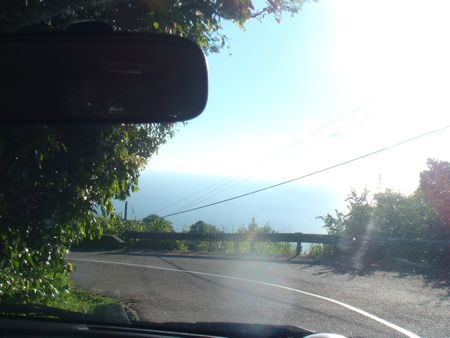
The gentleman behind the shop counter welcomed me: "I don't think I've ever had any New Yorkers in my shop," he added. We didn't meet many Americans either as we traveled through the Seychelles. Perhaps it is the distance and expense of getting to the Seychelles from the USA: neither is insignificant, and the few Americans we did meet were living and working in Europe, which shortened both.
But my personal theory is that gringos avoid the Seychelles because they're scared to drive. Twice we rented vehicles to explore Mahe. Driving on the British standard, the driver is on the right side of the vehicle and drives on the left side of the road. And on the interior of the car, everything was, to my expectations, on the "wrong side" of the car. It took a day to get used to shifting with the left (manual transmission! Another way of discouraging a society that mostly forgot how to use a clutch a generation ago) but it took three days to get used to finding the turn signals, and more than once I signaled a left by flipping on the windshield wipers.
Continue reading "Driving in the Seychelles"
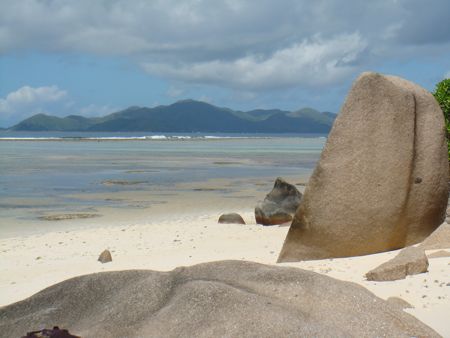
What passes for "off the beaten track" in the Seychelles still offers enough bike rentals, dive shops, curio stands, and snack bars to satisfy even the most relentlessly comfort-driven traveler. But we crossed the channel in the early morning hours to appreciate La Digue for what it was, not what it wasn't. In that unpretentious light, La Digue was a lot of fun.
Northeasternmost of the Seychelles' granitic islands, La Digue is best known for its southernmost beach, the stunning Anse Source de l'Argent. It is reportedly the world's most photographed beach, and deservedly so, as the white coralline beach sands, picturesque, rounded boulders, and turquoise seas, all set against emerald islets and the broad, green expanse of hilly Praslin island are, to my knowledge, unparalleled. If the photos here look familiar to Mac users, it is because this is one of the images that comprise the tropical scenery of Macintosh's screen saver.
Continue reading "La Digue: Anse Source de l'Argent"
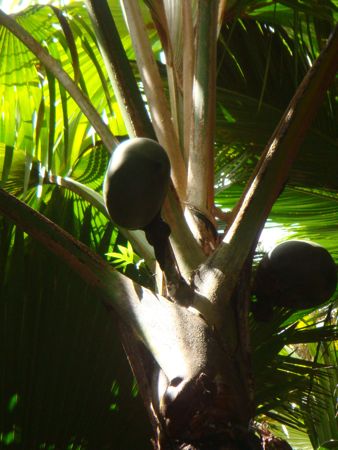
Deep in the highlands of Praslin Island in the Seychelles lies the Vallée de Mai, origin and sole source of the legendary Coco de Mer nut (Lodoicea maldivica). At nearly 40 pounds it is the world's largest seed, and the subject of centuries of rumors, superstitions, and mysteries due solely to its evocative shape, that of a woman's midsection, front and back.
Lyn Mair and Lynnath Beckley offer a fascinating overview of the Coco de Mer's unique botany, and a hilarious account of the long-mysterious nut's myriad fables and legends. The British explorer General Charles Gordon in particular got it spectacularly wrong, elaborating detailed theories of how the Seychelles were a remnant of the original Garden of Eden. As I've written elsewhere, hardly anyone can describe the Seychelles without resorting to mentions of Paradise, so perhaps the old coot can be forgiven for his exuberance over finding such an unequivocably suggestive fruit.
Continue reading "Seychelles: the Vallee de Mai"
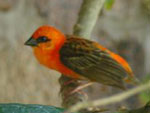
I've long been a naturalist and an animal watcher, and the Seychelles provided opportunities for enjoying exotic critters of all sorts. Here are just a few from my field book, from the gorgeous Fairy Tern to the world's largest tortoises, and more.
Continue reading "Fauna of the Seychelles"
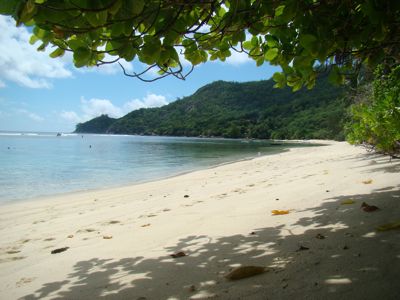
We arrived in the Seychelles on a late morning flight via Nairobi, pulling into a landing pattern just as a rain shower passed over the mountainous slopes of Mahe like a primordial ghost. Beneath our wings was a smallish island standing resolute in a turquoise sea, 900 meters high at its center and surrounded by coamers spilling over the reef on all sides. But after landing and emerging through a stunningly organized airport onto the streetside, Mahe was no less extraordinary from ground level.
Continue reading "Seychelles: Mahe Island"





